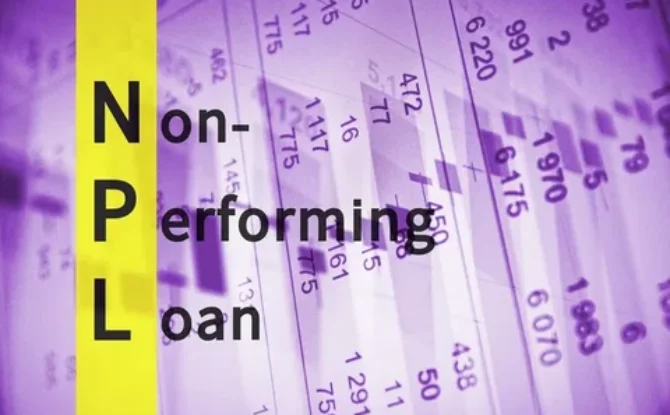In today’s financial landscape, managing credit card debt efficiently is crucial for maintaining financial health. Balance transfer offers a viable solution for individuals seeking to consolidate their debts and save on interest payments. This article presents a comprehensive guide to the top 10 balance transfer in India, offering insights into their features, benefits, and eligibility criteria.
Key Takeaways
| Understanding Balance Transfer |
| Benefits of Balance Transfer |
| Factors to Consider Before Opting for Balance Transfer |
| Top 10 Balance Transfer in India |
| Comparison of Balance Transfer Options |
| How to Apply for a Balance Transfer |
| Tips for Maximizing the Benefits of Balance Transfer |
| Common Mistakes to Avoid |
| Conclusion |
| FAQs (Frequently Asked Questions) |
Understanding Balance Transfer
A balance transfer involves transferring the outstanding balance from one credit card to another, usually with a lower interest rate.
Benefits of Balance Transfer
| 1. Lower Interest Rates |
| 2. Consolidation of Debt |
| 3. Improved Credit Score |
| 4. Savings on Interest Payments |
| 5. Streamlined Debt Repayment |
| 6. Simplified Financial Management |
| 7. Potential for Debt-Free Status |
| 8. Opportunity to Negotiate Better Terms |
| 9. Access to Introductory Promotional Offers |
| 10. Flexibility in Repayment Options |
Factors to Consider Before Opting for Balance Transfer
Before opting for a balance transfer, individuals should consider factors such as interest rates, fees, eligibility criteria, and credit score requirements to make an informed decision.
Balance Transfer in India at lowest rate of interest
Exploring Balance Transfer in India at lowest rate of interest opens doors for individuals to shift their credit card debt to a new card featuring the lowest possible interest rate. Numerous financial institutions and banks provide competitive rates, attracting customers keen on managing their debt effectively. By delving into available options, individuals can discover the best deal, tailored to their needs, ensuring substantial savings on interest payments.
Top 10 Balance Transfer in India
| Provider | Amount of Transfer | Tenure | Rate of Interest | Processing Fee |
|---|---|---|---|---|
| HDFC Bank | Up to INR 50 lakhs | Up to 5 years | Starting from 11.49% p.a. | Up to 1.5% of transferred amount |
| ICICI Bank | Up to INR 25 lakhs | Up to 5 years | Starting from 12.25% p.a. | Up to 2% of transferred amount |
| Axis Bank | Up to INR 20 lakhs | Up to 5 years | Starting from 12% p.a. | Up to 1.5% of transferred amount |
| State Bank of India (SBI) | Up to INR 15 lakhs | Up to 5 years | Starting from 11.90% p.a. | Up to 2% of transferred amount |
| Kotak Mahindra Bank | Up to INR 30 lakhs | Up to 5 years | Starting from 11.50% p.a. | Up to 2% of transferred amount |
| Citibank | Up to INR 20 lakhs | Up to 5 years | Starting from 11.49% p.a. | Up to 2.5% of transferred amount |
| HSBC Bank | Up to INR 15 lakhs | Up to 5 years | Starting from 11.99% p.a. | Up to 1% of transferred amount |
| Standard Chartered Bank | Up to INR 25 lakhs | Up to 5 years | Starting from 11.99% p.a. | Up to 2% of transferred amount |
| IndusInd Bank | Up to INR 20 lakhs | Up to 5 years | Starting from 11.99% p.a. | Up to 2% of transferred amount |
| Bajaj Finserv | Up to INR 20 lakhs | Up to 5 years | Starting from 12.99% p.a. | Up to 3% of transferred amount |
Comparison of Balance Transfer Options
1. Interest Rates
Interest rates vary across different balance transfer options, and individuals should compare them carefully before making a decision.
2. Processing Fees
Some banks may charge processing fees for balance transfers, which can impact the overall cost savings.
3. Repayment Tenure
The repayment tenure offered by each bank may vary, and individuals should choose one that aligns with their repayment capabilities.
How to Apply for a Balance Transfer
| 1. Check Eligibility |
| 2. Compare Balance Transfer Offers |
| 3. Gather Necessary Documents |
| 4. Visit Bank's Website or Branch |
| 5. Fill Out Application Form |
| 6. Provide Required Documentation |
| 7. Submit Application |
| 8. Wait for Approval |
| 9. Receive Confirmation |
| 10. Review Terms and Conditions |
| 11. Accept Offer |
| 12. Await Balance Transfer |
| 13. Confirm Successful Transfer |
| 14. Start Repayment |
| 15. Monitor Account Activity |
Tips for Maximizing the Benefits of Balance Transfer
1. Paying on Time
Timely payments are crucial to avoid incurring additional charges and maintaining a good credit score.
2. Avoiding New Purchases
To maximize savings, individuals should refrain from making new purchases on the credit card post balance transfer.
3. Regularly Monitoring Credit Score
Regularly monitoring the credit score can help individuals track their financial progress and take necessary steps to improve it further.
Common Mistakes to Avoid
1. Ignoring Hidden Charges
Individuals should carefully read the terms and conditions to avoid any hidden charges associated with balance transfer offers.
2. Missing Payments
Missing payments can lead to penalty charges and negatively impact the credit score, undermining the benefits of balance transfer.
3. Closing Old Credit Card Accounts Hastily
Closing old credit card accounts hastily can affect the length of credit history, which is an essential factor in determining credit score.
Conclusion
Balance transfer offers a convenient and cost-effective solution for individuals looking to manage their credit card debt efficiently. By comparing the top 10 balance transfer options in India and considering factors such as interest rates, fees, and repayment tenure, individuals can make an informed decision that suits their financial needs.
Looking to consolidate your debts and save on interest? Contact us now to discuss the best balance transfer options tailored to your needs!
FAQs (Frequently Asked Questions)
1. Is balance transfer suitable for everyone?
Ans: Balance transfer is suitable for individuals with high-interest credit card debt who can benefit from lower interest rates offered by other banks.
2. Will opting for a balance transfer affect my credit score?
Ans: Initially, the credit score may see a slight dip due to the credit inquiry, but timely payments on the new credit card can help improve the score over time.
3. Can I transfer balances between cards from different banks?
Ans: Yes, many banks offer balance transfer facilities between cards from different banks, allowing individuals to consolidate their debt effectively.
4. How long does it take for a balance transfer to complete?
Ans: The duration varies depending on the bank and the documentation provided, but it typically takes a few days to process.
5. Are there any penalties for paying off the transferred balance early?
Ans: Some banks may impose prepayment penalties, so it’s essential to check the terms and conditions before making early payments.







